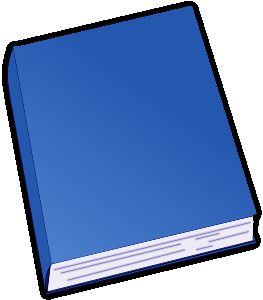Mechanical Drawing Self-Taught Comprising instructions in the selection and preparation of drawing instruments By: Joshua Rose |
|---|

In Mechanical Drawing Self-Taught, Joshua Rose provides a comprehensive and methodical guide to mastering the art of mechanical drawing. With clear and concise instructions, this book is an invaluable resource for beginners and experienced artists alike.
Rose begins by introducing the reader to the fundamental tools required for mechanical drawing. From compasses and rulers to pencils and erasers, he covers each instrument in detail, emphasizing their selection, usage, and care. This attention to the basics ensures that readers are well-equipped to tackle the more complex drawing techniques discussed later in the book.
The author's instructional approach is commendable. He breaks down complex concepts into manageable step-by-step instructions, greatly facilitating the reader's understanding and enabling them to progress at their own pace. Rose's explanations are accompanied by numerous illustrations, providing visual reinforcement of the concepts being taught. This combination of clear text and visual aids makes the learning process smooth and enjoyable.
One of the book's strengths lies in its wide-ranging coverage of mechanical drawing techniques. Rose covers topics such as perspective drawing, dimensioning, sectional views, and pictorial representation in a systematic manner. Each chapter builds upon the previous one, allowing the reader to develop a solid foundation before delving into more advanced topics.
Furthermore, the author's writing style is engaging and accessible. He strikes a balance between technical jargon and plain language, making the material both informative and approachable. Even readers with limited prior knowledge of mechanical drawing will find themselves quickly grasping the concepts and techniques presented.
While the book primarily focuses on mechanical drawing, Rose also provides insights into the application of these skills in various fields. He discusses their relevance in architecture, engineering, and industrial design, highlighting the importance of precision and accuracy in these professions. This broader perspective allows readers to appreciate the practical applications of mechanical drawing and motivates them to excel in their artistic endeavors.
Although Mechanical Drawing Self-Taught was initially published in the early 20th century, the content remains highly relevant today. The principles and techniques outlined by Rose are foundational and transcend technological advancements. While modern tools may differ slightly, the core concepts and skills presented in this book are timeless.
In conclusion, Joshua Rose's Mechanical Drawing Self-Taught is a masterful instructional guide that equips readers with the knowledge and skills necessary for mastering the art of mechanical drawing. With its clear instructions, visual aids, and engaging writing style, this book is an essential companion for anyone seeking to explore and excel in the world of mechanical drawing. COMPRISING INSTRUCTIONS IN THE SELECTION AND PREPARATION OF DRAWING INSTRUMENTS, ELEMENTARY INSTRUCTION IN PRACTICAL MECHANICAL DRAWING ; TOGETHER WITH EXAMPLES IN SIMPLE GEOMETRY AND ELEMENTARY MECHANISM, INCLUDING SCREW THREADS, GEAR WHEELS, MECHANICAL MOTIONS, ENGINES AND BOILERS. BY JOSHUA ROSE, M.E., AUTHOR OF "THE COMPLETE PRACTICAL MACHINIST," "THE PATTERN MAKER'S ASSISTANT," "THE SLIDE VALVE" ILLUSTRATED BY THREE HUNDRED AND THIRTY ENGRAVINGS. PHILADELPHIA: HENRY CAREY BAIRD & CO., INDUSTRIAL PUBLISHERS, BOOKSELLERS AND IMPORTERS, 810 WALNUT STREET. LONDON: SAMPSON LOW, MARSTON, SEARLE & RIVINGTON, CROWN BUILDINGS, 188 FLEET STREET. 1887. Copyright by JOSHUA ROSE. 1883. PHILADELPHIA. COLLINS, PRINTER PREFACE. The object of this book is to enable the beginner to learn to make simple mechanical drawings without the aid of an instructor, and to create an interest in the subject by giving examples such as the machinist meets with in his every day workshop practice. The plan of representing in many examples the pencil lines, and numbering the order in which they are marked, the author believes to possess great advantages for the learner, since it is the producing of the pencil lines that really proves the study, the inking in being merely a curtailed repetition of the pencilling... Continue reading book >>
|
| eBook Downloads | |
|---|---|
|
ePUB eBook • iBooks for iPhone and iPad • Nook • Sony Reader |
Kindle eBook • Mobi file format for Kindle |
|
Read eBook • Load eBook in browser |
Text File eBook • Computers • Windows • Mac |
| Review this book |
|---|